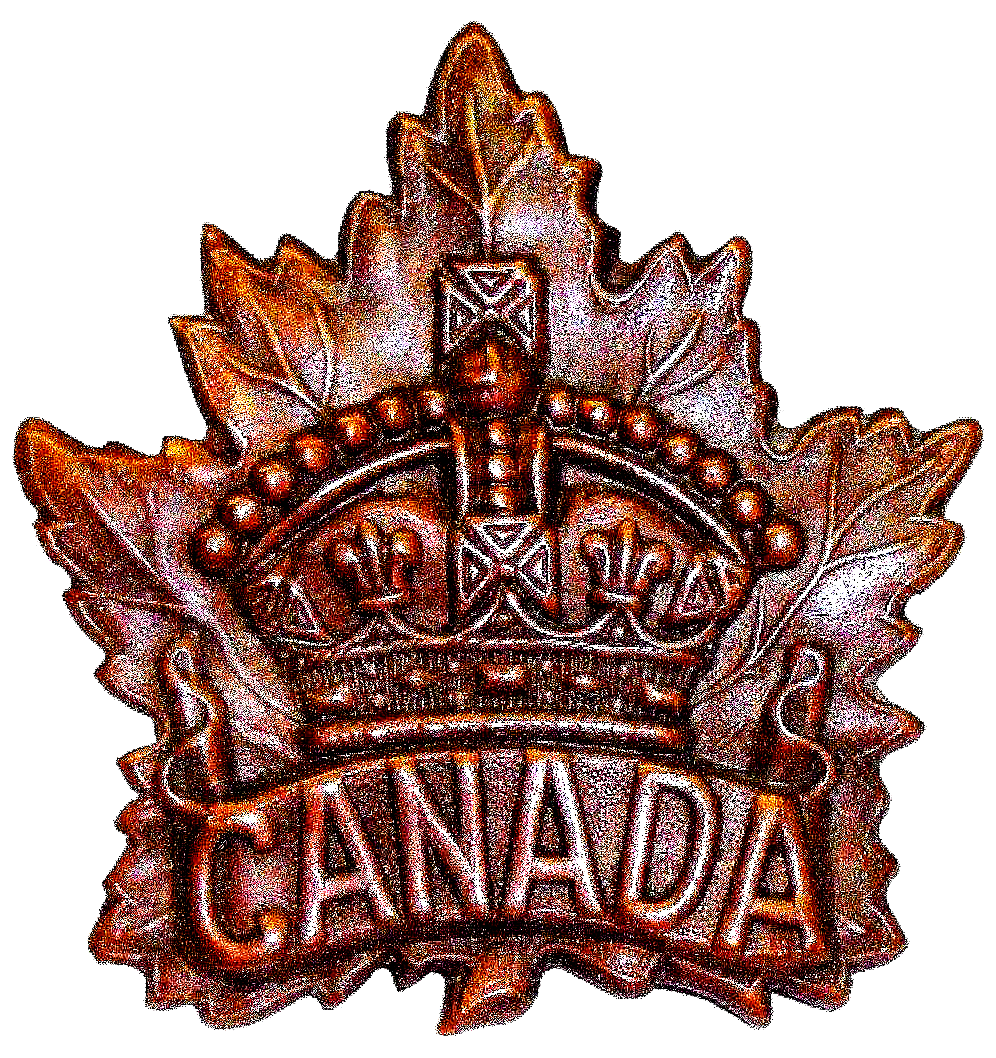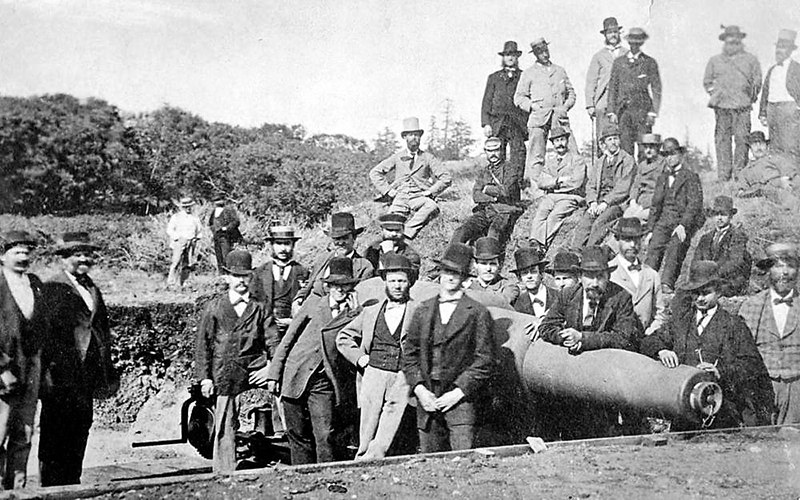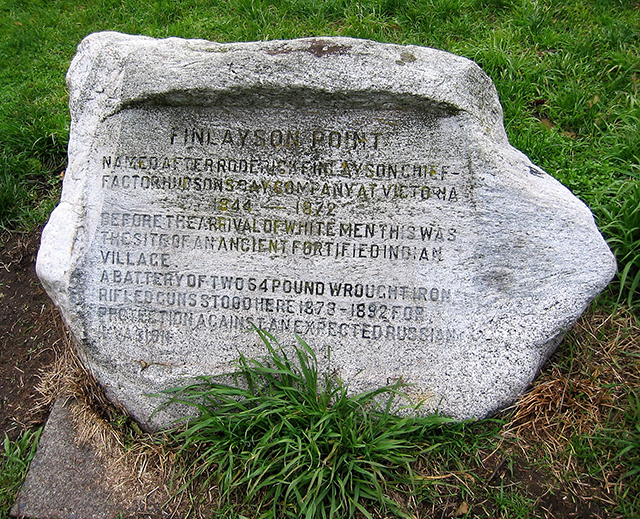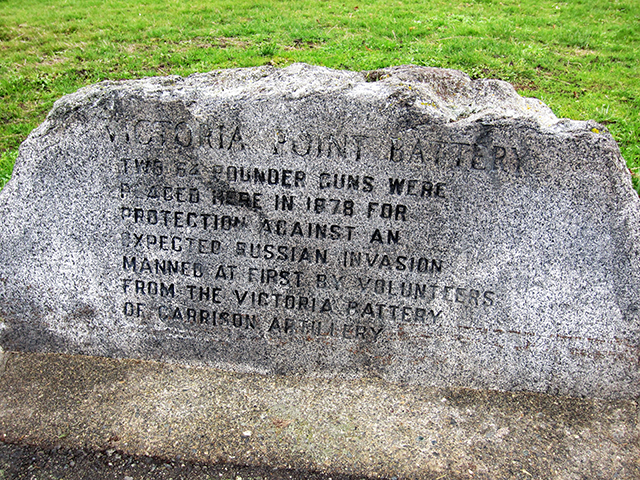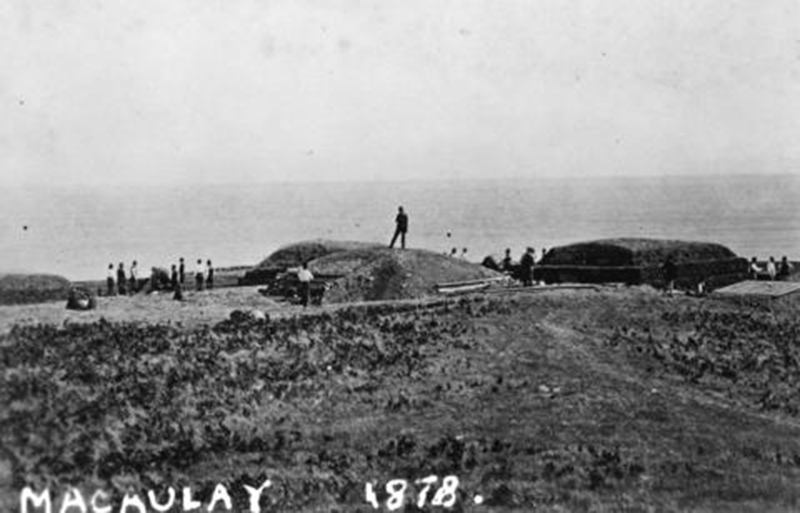 |
 OPCMHVisitor No.: |
HISTORY OF WORK POINT BARRACKSby Jack BatesPART 1 — 1842 to 18861878Daily Colonist NOTICE PERSONS DEESIROUS OF ENROLL- ing themselves as a volunteer artillery Corps, are urgently requested to report themselves personally to the Deputy Adjutant General of Militia at the Drill Shed, between the hours of 12 a.m. and 2 p.m. on Monday next, the 18th instant. C.F. Houghton, Lt. Col. COLONIST VOLUNTEER ARTILLERY DRILL The first drill of this corps will take place by detachments at the drill shed to-day as follows: Capt. Croasdale’s company, No. 1, at 4 p.m.; Capt. Machell’s company, No. 2, at 6:30 p.m.; Capt. Dupont’s company, No. 3, at 8 p.m. The commanders of the corps have had experience in military matters. Capt. Croasdale is a Lieutenant of the Royal Navy on the retired list; Captain Machell held the rank of Captain in the British Army, from which he lately retired; and Captain Dupont was an officer of the Victoria Rifles, Ontario.
See COLONIST July 23, 1922 (18-19) for caption on this photo. COLONIST NOTICE TENDERS FOR MAGAZINE SEALED TENDERS WILL BE RECEIVED until noon on the 4th day of May, 1878, for the erection of a magazine at Victoria, B.C., according to plans and specifications, which may be seen on application at the office of Mr. E. Mallandaine, Architect, Government street. The Department will not be bound to accept the lowest or any tender.
mh24 This was for the magazine in James Bay at Beacon Hill Park. May 12, 1878 James Bay Magazine The tenders for the erection of the militia magazine at James Bay have been forwarded to Ottawa by Lieut. Col. Houghton, D.A.G. It is stated that Mr. Wm. Galley’s tender of $1,100 is the lowest. June 11, 1878 THE DEFENCE OF CANADA The Montreal Gazette says: "A few weeks ago we announced that Lieut–Colonel Sir William Palliser, C.B., had nobly offered to present to the Canadian Government a 7 inch and an 8 inch rifle gun, to be delivered to Quebec free of cost. These guns, worth nearly 200 lbs apiece, have been cordially accepted by the Government. We are now informed that on Saturday last, Sir E. Selby Smyth, K.C.M.G., received a cable message from the generous inventor offering a 10 inch rifled gun to the Government for the Battery at Victoria, protecting the harbour at Esquimalt and the approach to the town. This Battery, it is hoped, will soon have, besides, an armament of six heavy breech loading rifled guns. Orders have been given to raise a volunteer force of Artillery at Vancouver’s Island." – Liverpool Mercury June 11, 1878 OUR DEFENCES Colonel Irwin, having selected Finlayson Point, to the east of the grand stand at Beacon Hill, as a suitable place for a Battery, men will commence throwing up earthworks there this morning. This battery will consist of two 64 pounders. A second Battery of two 64 pounders will shortly be erected nearer the mouth of the harbour, three 64 pounders on Macaulay Point and one 7 inch gun at Fisgard Point. There is a granite cairn on Finlayson Point with the inscription: FINLAYSON POINT
And, on Victoria Point with the inscription: VICTORIA POINT BATTERY
On July 20th, 1878 the militia artillery company had been gazetted as “The Victoria Battery of Garrison Artillery,” and fires its first round from a 7 inch RML gun at Macaulay Point on July 26. This unit is the forerunner to the 5th (BC) Field Regiment in Victoria. On July 29, 1878, the newly formed Victoria Battery of Garrison Artillery fired a 13 gun salute from the 3 - 7” guns at Macaulay Point in recognition of the 3rd opening of the BC Provincial Assembly in Victoria. This practice is continued to date by the 5th (BC) Regiment Royal Canadian Artillery headquartered at the Bay Street Armouries. By August 30, 1878, earthworks for the batteries were completed by civilian labour, directed by Lt. - Col. De la C.T. Irwin, RA. The Macaulay Battery consisted of three 7 inch, 6 ½ ton, rifled muzzle loading guns loaned from the Royal Navy. All the batteries were manned by civilian volunteers, mostly retired Royal Marines. Such was the way it was started, a Royal Navy Pacific Station first mentioned in 1837, Esquimalt Harbour survey completed in 1846 and the Oregon Boundary Convention between Britain and the United States of America signed June 15th, of the same year. British war ships started arriving at Esquimalt in 1848, three “huts”, for expected Crimean wounded, were built for the Royal Navy in 1855, on orders from Sir James Douglas the Governor of the Colony of Vancouver Island at the time, at Duntze Head at a cost of 932 lbs. They were built on 7 acres, each measuring 50 feet by 30 feet and called the “Naval Hospital”. They included kitchens, an operating room and surgeon’s quarters. They are long since gone, the “Admiral’s House” built in 1885, on the site where the Storekeeper’s house was located, was utilized since 1857 as naval stores, a draughting room, and eventually modified with a second storey, to be the storekeeper’s residence. The other two, used as offices for a time, were demolished in 1936 and 1939. Also, the Royal Navy was constructing the Naval yard and depot with supporting infrastructure, including a new Hospital and a Lighthouse by 1864. The Royal Naval Establishment of Esquimalt was created in London on the 29th of June, 1865. St Paul’s Naval Church, part of the developing village of Esquimalt, was consecrated on December 12, 1866, the same year that the Crown Colony of Vancouver Island united with mainland British Columbia. The church was relocated to its present site in 1904, and later became known as St Paul’s Naval and Garrison Church in 1911. The Work Point military, predominantly an Imperial garrison until 1906, had been loyal to St Saviour’s church in Victoria West. On Thursday July 20th 1871, British Columbia joined the Dominion of Canada. The Royal Engineers, of the Boundary Commission and the Columbia Detachment, with families, had been in British Columbia since July 1858, initially headquartering themselves in three “Engineer’s Huts” on ten acres at Skinner’s Cove in Esquimalt for two winters. That current site, now “Naden”, became the home of the Hospital in 1862 relocated from Duntze Head, via the Engineer’s huts. The Royal Engineers surveyed for towns and the international boundary, produced mapping, built trails, roads, bridges and buildings. They also provided a military presence in British Columbia when called upon. They were located in Esquimalt and old Fort Langley and were later disbanded in July 1863. Part of the 1871 Confederation agreement was the inclusion of extending the railway to the west coast, assuming the existing Provincial debt, creation of Military District # 11 in Victoria with provision for the Militia, and a dry dock being built in Esquimalt. Of course militia and artillery batteries were part of the scheme to counter the threat of annexation by the United States and provide a defence against other attacking foes. There were other strategic points of concern on the mainland and in Nanaimo. From the time of entering Confederation, Esquimalt / Victoria armaments were being built, artillery batteries and militia companies were established, and the “Victoria Battery of Garrison Artillery” was first mentioned as the “Esquimalt Army Garrison” in July 1878. The Militia General order (No. 17), dated 19 July, 1878, and published in the Canada Gazette on 20 July, 1878 reads as follows: “The formation of a battery of Canadian Artillery at Victoria is hereby authorized to be designated the Victoria Battery of Garrison Artillery.” A military figure of note in Victoria, specifically regarding Work Point, was Lt.-Col. T.B. Strange, RCA, sent here to report on defences for Victoria and Esquimalt, arriving on August 13, 1879 from Quebec. So now on to Work Point, December 1, 1887, the Work Point site is officially selected as the location for the new Esquimalt Garrison military barracks by Sir A. Caron, I’m sure with the recommendation of Col. Holmes. The close proximity to the Macaulay defences helped influence the choice. It is to be occupied by “C” Battery which arrived in Victoria on Nov. 10th, under command of Major James Peters. They were temporarily located in the old Provincial Agricultural Hall complex pending construction of the permanent barracks in Esquimalt. Lt.-Col. J. G. Holmes is now confirmed as the second D.A.G. of M D # 11, having arrived in Victoria and being appointed acting D.A.G. in 1883. Capt C.F. Houghton was the first, appointed in 1873 and later relocated in 1881 to M D # 10. In 1877, he led military intervention during the coal miner’s strike in Nanaimo, utilizing a gun boat, infantry from Victoria and field artillery. He died in Victoria on August 13, 1898 and is buried at Ross bay Cemetery. Quite an interesting tale, for more see the Ross Bay Cemetery Historic Guide.
BROTHERS ISLAND BATTERY The Victoria Garrison Artillery will go down to Esquimalt for firing practice at Brothers Island where one 8-inch gun and two 64-pounders have been mounted. Courtesy Sherri Robinson, Esquimalt Archives, June 23, 2024. 1879COLONIST MAGAZINE, BEACON HILL PARK Instructions have been received to proceed with this work, Mr. Mallandaine, architect. The following tenders were accepted at Ottawa for the altered plans: E.W. Davey, brickwork; John McDowell, carpenter work; D. Heal, tin work. Another architect will superintend the carpenter work.
National Archives of the U.K. Plans of Coastal Batteries for the Defence of Victoria, Vancouver Island, B.C. (6) Description: Map of Victoria and Esquimalt harbours, showing defences with their fields and ranges of fire. Copied from an original drawn by Lt. Col. D.T. Irwin, Inspector of Artillery, Dominion of Canada (Victoria and Esquimalt c. 1879) Click here to view a very large PDF file of the above. |
